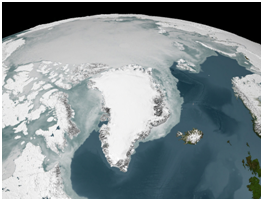Shaping a sustainability strategy for the Arctic
To address gaps, limitations and deficiencies by designing and implementing an overarching, participatory and transboundary strategic environmental assessment (SEA).
Project leader: Professor Berit Balfors
Participants: PhD student Juan Azcárate, Professor Berit Balfors and assistant professor Ulla Mörtberg, KTH; Professor Georgia Destouni and PhD student Arvid Bring, Hydrogeology and Water Resources Department of Physical Geography and Quaternary Geology at Stockholm University
Key words: Arctic, climate change, sustainable development, strategic environmental assessment, participation and capacity development.
Project period: 2011/01 to 2011/12

Project description
The Arctic, with its natural resources, extreme climate, isolated location, magnificent landscapes and exotic fauna, raises interest and curiosity for resource exploitation, as well as for science, tourism and many other human activities. At the same time as its unique ecosystems need to be preserved for future generations, climate change and new development claims may compromise the future viability of this polar region.
In the Arctic, warmer climate is expected to affect ecosystems, local communities and infrastructure due to a combination of effects, like reduced sea ice and glaciers, thawing permafrost and increased frequency of floods. Less ice and new technologies mean openings to exploit natural resources in the Arctic. Fishing, mining, hydrocarbon extraction and vessel transport activities are likely to increase together with supporting infrastructures. An escalation of economic activities in the Arctic are expected to generate employment opportunities and migration, leading to increasing urbanization, and affecting the socio-economic structures of indigenous cultures.
Mechanisms like the Arctic Environmental Protection Strategy (AEPS), the Arctic Council, and legal frameworks for environmental assessment have been implemented to support development toward balanced preservation and resource exploitation activities in the Arctic. Despite this, there are still gaps in the legislation, limitations to environmental assessments, and deficient collaboration between actors.
Aim
The aim of the research is to address the mentioned gaps, limitations and deficiencies by designing and implementing an overarching, participatory and transboundary strategic environmental assessment (SEA). In such an SEA process the strategic decisions and measures that need to be taken for a sustainable Arctic future will be fostered through strategic dialogues that will bring together different visions, objectives, and development scenarios for the Arctic.
Cooperation
Professor Georgia Destouni and PhD student Arvid Bring, Hydrogeology and Water Resources Department of Physical Geography and Quaternary Geology at Stockholm University, Sweden
